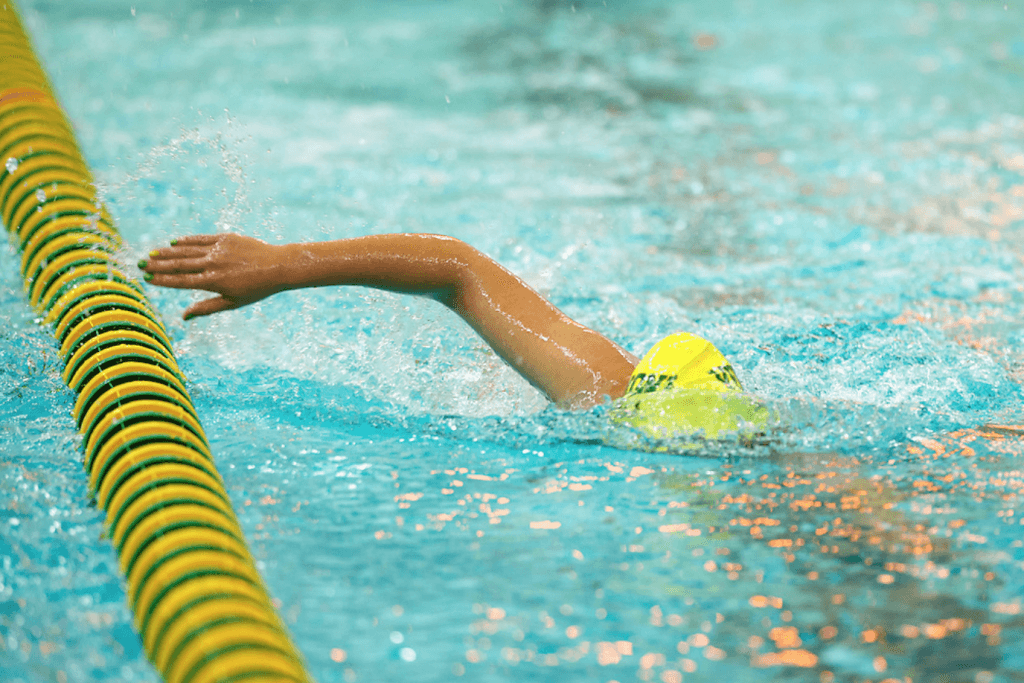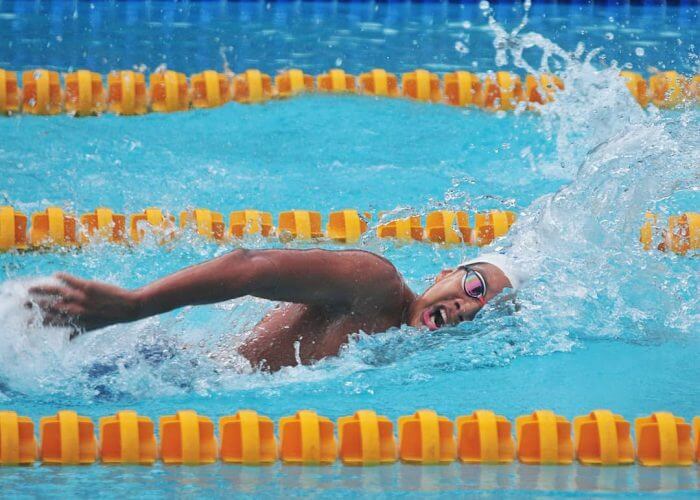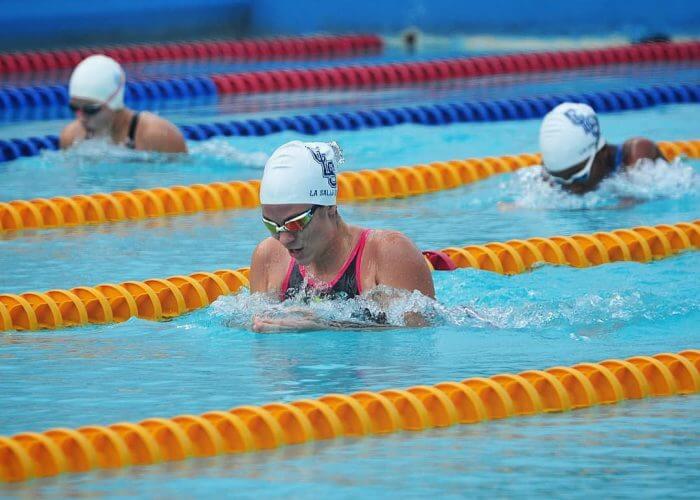Tempo and Rhythm: A Swimmer’s Secret Weapons

Tempo and Rhythm: A Swimmer’s Secret Weapons
There are countless combinations of sets and drills that help swimmers enhance their overall training and performance. We can focus on a single aspect of our swim such as pulling, kicking, or breathing. Yet, have you ever thought of focusing on your tempo, rhythm or timing specifically? We might think of these as synonyms, but the reality is that they are three different concepts that simply go hand in hand.
Tempo, Rhythm and Timing
The Oxford English Dictionary defines tempo as the “The rate of motion or activity (of someone or something),” and rhythm itself as “senses relating to a regular repeated pattern of sound or movement.” Considering the official meaning of these terms, former biomechanic doctor Genadijus Sokolovas defines tempo in swimming as “the number of stroke cycles per minute” and rhythm as “relative to the stroke technique”, such as the butterfly rhythm that includes one pull and two kicks.
Regarding timing, the Oxford’s definition says that it is “the performance of an action at, or according to, a specific time, and related senses.” Sokolovas says it is related to the breathing pattern, relative to the kick or stroke rate. “For example, what is the best timing of breath in freestyle? Should swimmers start head rotation for the breathing at the beginning or in the middle of the stroke? That relates to timing,” explains Sokolovas.
Importance

Photo Courtesy: Moises Gainza
Tempo and rhythm are directly proportional. Finding an adequate tempo creates an optimal rhythm, which is achieved by having an appropriate timing of the body’s actions. However, the optimal tempo doesn’t necessarily have to be the maximum stroke rate. While moving at a fast pace, elite swimmers can keep a similar tempo throughout their races. They can also hold a lower tempo with a longer distance per stroke (dps). On the other hand, less experienced swimmers often start with a very high tempo at the beginning of their race, losing tempo in the middle and sometimes regaining tempo at the end of the race. “Keeping the same tempo during the race and even during each lap is a more energy-efficient way to race,” says Sokolovas.
It is important for swimmers and coaches to focus on what works better for each athlete depending on the length of their swim, height, and level.
Factors that Affect Tempo
Tempo is key in all four strokes and distances, yet there are specific elements that pertain to each stroke. According to Sokolovas, these are the most important:
- Butterfly: body undulation, arms recovery, gliding.
- Backstroke: body rotation, depth of the stroke.
- Breaststroke: gliding time, finish of the stroke, arms recovery, kicking.
- Freestyle: breathing, finish of the stroke, kicking.

Photo Courtesy: Moises Gainza
When it comes to the type of race, the shorter the distance, a higher tempo is required to swim. However, it is hard to reach the same tempo for breaststroke and butterfly in comparison to long axis strokes. Lewis University’s head coach Roger Karns says,”Swimming hurriedly in fly or breast can be like spinning your car tire on ice.” Opening the arms before finishing the kick in breaststroke will create a lot of drag. “Your arms will be moving very fast, but you will not be going anywhere,” states Karns.
Ways to Improve Tempo
Tempo Trainers
Tempo trainers are audio devices that help swimmers to follow a specific tempo. Current head coach of Club La Salle 2000 in Panama City, Panama, Moises Gainza, says Tempo trainers are of big help when the swimmer has achieved a certain level of athletic maturity. “I think its use is more efficient when used by older, advanced swimmers, and they have a defined event to prepare for,” explains Gainza. Tempo trainers help to develop more efficient racing skills. “However, it is necessary to be clear about the optimal tempo without the tempo trainer, since at the time of the race, swimmers will not have the aid in the water.”
Stroke Count
Emphasizing stroke count and distance per stroke during practice is highly recommended, with or without a Tempo trainer. Olympian Alexander Popov used to count his strokes on each length during practice, which helped him set a consistent tempo that transferred into his races.
Dance Lessons?
Swimmers don’t typically coordinate with ease when it comes to land excercises. Coach Gainza argues that having a good rhythm outside of the pool allows athletes to acquire efficient tempos easily. “It is going to be harder for someone who hasn’t developed a sense of rhythm in land to transfer it to the water,” Gainza explains.
In January, his team organized an 8-week training camp that apart from swimming and dryland, included 45-minute Zumba lessons. The swimmers were divided by ages and each group danced twice a week. “We filmed each athlete at the beginning of the camp and then at the end; the results were outstanding,” Gainza states. “You could see a huge difference in their overall stroke rhythm in the water, it was amazing.”
One of dancing’s main principles is to move to the rhythm of the music according to a certain beat; just as swimmers must find a rhythm of their own. Yet, apart from coach Gainza’s examination, there is no rigorous scientific research that supports the analogy between dancing and improved rhythm in the water. Nonetheless, it could be worthwhile to give it a try.
Tempo and Rhythm as Secret Weapons
Sometimes, these two go unnoticed. Consider mastering them during practice; they could be able to surprise you at the time of the race.
-All commentaries are the opinion of the author and do not necessarily reflect the views of Swimming World Magazine nor its staff.



